Bloodsworth: A man unfairly convicted and sentenced to death is saved by DNA.
Frank speaking at the Grey Eagle Library and pictures he took on the way to the library. 

 Upcoming Events! October 4, 2018 Frank will be at the Hello Beautiful event, with the Shoppes of Little Falls, at the Falls Ballroom from 4:00 pm to 8:30 pm, signing books and answering questions about The I-94 Murders.
Upcoming Events! October 4, 2018 Frank will be at the Hello Beautiful event, with the Shoppes of Little Falls, at the Falls Ballroom from 4:00 pm to 8:30 pm, signing books and answering questions about The I-94 Murders.
Address: Falls Ballroom 15879 Hwy 27., Little Falls, MNOctober 6, 2018 Speaking on The I-94 Murders. Grey Eagle Library . Grey Eagle, Minnesota. 11:00 amOctober 13, 2018 Frank will be signing and selling books at the 19th Annual Twin Cities Book Festival, Saturday October 13, 2018, at the Minnesota State Fairgrounds, from 10:00 a.m. to 5:00 p.m. FREE ADMISSIONOctober 16, 2018 The I-94 Murders book launch will occur at the Crossings Arts Alliance in Brainerd, with Frank Weber signing and selling books from 5:00 p.m. to 7:00 p.m., with a 5:30 p.m. presentation. The Crossing Arts Alliance is located at 711 Laurel St., Brainerd, MN 56401
October 17, 2018 Frank will be speaking to readers of The I-94 Murders at 3:30 p.m. at Pierz High School in the media center. Bloodsworth: A man unfairly convicted and sentenced to death is saved by DNA.
The I-94 Murders examines a new method of using DNA to solve crimes. The initial way DNA was used in criminal cases is perhaps best explained in a book written by Tim Junkin, titled Bloodsworth.
Kirk Bloodsworth, as an adolescent was already an expert trapper and oysterman. After high school he became a Marine (honorably discharged), and then had become a waterman (crabber & fisherman) on the Eastern Shore of Maryland. Kirk had no legal charges. He was the first person to be sentenced to death and then subsequently exonerated as a result of DNA. Dawn Hamilton Dawn Hamilton’s mother gave birth to her when she was 17. Dawn’s mother was a stripper, but a friendly older woman, named Casimara “Mercy” Sponaugle, spent a lot of time with Dawn. Mercy attempted to adopt Dawn, but her biological father didn’t let the adoption go through. Mercy had signed Dawn up for a camp, but the father had picked her up for a visit and was unaware of the camp. Mercy was the first person to look for Dawn when she couldn’t be accounted for. When Mercy couldn’t find Dawn, Dawn’s father took over. It was a 90 degree summer afternoon in Baltimore, and Dawn was looking for friends to play with. She had been told two children she knew were by the woods. An adult man offered to help her find them. Dawn was last seen alive walking with the man into the woods.
Dawn Hamilton Dawn Hamilton’s mother gave birth to her when she was 17. Dawn’s mother was a stripper, but a friendly older woman, named Casimara “Mercy” Sponaugle, spent a lot of time with Dawn. Mercy attempted to adopt Dawn, but her biological father didn’t let the adoption go through. Mercy had signed Dawn up for a camp, but the father had picked her up for a visit and was unaware of the camp. Mercy was the first person to look for Dawn when she couldn’t be accounted for. When Mercy couldn’t find Dawn, Dawn’s father took over. It was a 90 degree summer afternoon in Baltimore, and Dawn was looking for friends to play with. She had been told two children she knew were by the woods. An adult man offered to help her find them. Dawn was last seen alive walking with the man into the woods.
In 1984, a 9-year-old, Dawn Hamilton was found dead in a wooded area, near Rosedale, Maryland, having been sexually assaulted (anally and vaginally), choked by the assailant standing on her neck with his tennis shoe, and beaten with a rock.
How does a Kirk Bloodsworth get convicted of murder and sentenced to death, when he never actually met the victim? Five eyewitnesses stated that they had seen Kirk with the victim, while he continued to maintain his innocence throughout his trial and subsequent incarceration. The two witnesses relied on most heavy by the prosecution, were a 10-year-old boy and a 7-year-old boy. Both said they saw a man with curly blonde hair with the girl. Kirk had red hair and “lamb chop” side burns. Neither boy remembered the side burns. The 10-year-old described the man as 6’5”. The investigator asked a 6’3” police officer to step into the room. The 10-year-old said the man was smaller. Later in the courtroom, the boy pointed to Kirk as the man. (It is significant to note that this was after Kirk’s arrest and picture had been all over television.) The 7-year-old said the man was 6’0” tall, and failed to pick Kirk out of a line-up; however, his mother was allowed to testify that he later told her the correct man. (She was paid for her testimony.) An adult woman, their best witness, also reported seeing a man with curly blonde hair walking away from the woods. She said the man was 5’7”. She was unhappy with the sketch the 10-year-old created, but the police decided to go with it anyway. Kirk Bloodsworth is 6’5” with red hair. The actual killer, Kimberly Ruffner (male), was 5’6” and had curly blonde hair. A fourth woman initially reported she knew the man and gave the name of another male who lived in the neighborhood. However, she later indicated she had seen Kirk. A fifth witness initially stated she didn’t see the man, but heard him calling the girl. She later testified she saw Kirk. (Both of these women said at the second trial they had gone with the image of Kirk shown on TV. Kirk was convicted again at the second trial.) Kirk Bloodsworth This was a heavily publicized case and pressure was put on the police to solve it. Police were combing the area, and an officer came upon Kirk Bloodsworth sitting in a yard drinking a beer. Kirk had quit his job in Baltimore and left his wife as a result of her substance abuse and her failing to come home at night. Kirk had told a friend, he had “done something bad.” Kirk indicated he was nervous because he had marijuana he hid in his shoe when he saw the officer coming. Kirk had never been arrested for anything. The officer went back and told investigators that Bloodsworth seemed unnaturally nervous, so they decided to pull him in for questioning. The investigators set girl’s underwear, shorts and a rock on a table in the room to see if Kirk would have a reaction to them. (They had heard the killers will react to material from the murder being placed in the interview room.) Kirk didn’t react to them.
Kirk Bloodsworth This was a heavily publicized case and pressure was put on the police to solve it. Police were combing the area, and an officer came upon Kirk Bloodsworth sitting in a yard drinking a beer. Kirk had quit his job in Baltimore and left his wife as a result of her substance abuse and her failing to come home at night. Kirk had told a friend, he had “done something bad.” Kirk indicated he was nervous because he had marijuana he hid in his shoe when he saw the officer coming. Kirk had never been arrested for anything. The officer went back and told investigators that Bloodsworth seemed unnaturally nervous, so they decided to pull him in for questioning. The investigators set girl’s underwear, shorts and a rock on a table in the room to see if Kirk would have a reaction to them. (They had heard the killers will react to material from the murder being placed in the interview room.) Kirk didn’t react to them.
Kirk was ultimately released and proceeded to drink excessively, frustrated that he was being accused of murdering a child, when he would never hurt a child. A woman who was a friend with one of the investigators was asked to listen to him, to see what he said. Kirk commented, “They think I killed that girl with a rock.” That statement resulted in Kirk being incarcerated for the next nine years. Investigators argued that only the murderer could have known the girl was killed with a rock. Kirk said he just assumed this, being the rock was sitting with her clothes.
A man’s tennis shoe was found in the home Kirk was visiting, with a similar shoe print to the one on the girl’s neck. An investigator reported the tennis shoe was size 10 ½. Kirk wore size 10 ½. However, the investigator later revealed the tennis shoe was 10 ½ inches long and wasn’t a size 10 ½ . The shoe was actually a size 8. Still, jurors who convicted Kirk stated it was too coincidental that a similar shoe was in the home. (It was never determined that this was the shoe. It was a popular brand.)
And then investigators found out Kirk had said that he had, “done something bad.” While this statement was used, the woman he said it to was never allowed to explain in court that she knew it was in reference to leaving his wife and quitting his job. When Kirk was asked about it, he was nervous and said he was supposed to buy his wife a taco salad. This poor explanation was used in each court hearing. The prosecutor showed the brutal pictures of the girl’s murder to the jury, generating an attitude that someone needed to pay for this.
Kirk’s defense attorney wanted to have the body fluid evidence on the girl’s clothing examined. The medical examiner reported there was sperm present. Even though this was before DNA testing, they could still use it to identify the killer’s blood type. However, when the evidence was turned over to the FBI, they reported there was no sperm on the clothing. Eight years later, not only did a private lab find sperm on the clothing, they pointed out that the FBI lab had taken a marker and drawn an arrow to it. However, the FBI apparently never tested it. Kirk and his attorneys didn’t know this at the time of his trials, and were subsequently told they had no evidence to prove Kirk wasn’t the killer. But think about how backwards this case had become. There was no physical evidence connecting Kirk Bloodsworth to the crime, and despite that, he was sentenced to death row, simply because he couldn’t prove he wasn’t he killer.
Ironically, Kirk had an alibi. He had been with three friends, who were all addicts. All reported they remembered the day because the cat had urinated on Kirk’s blanket when he was sleeping on the couch. Each witness was determined not credible by the prosecutor, Ann Brost. She asked them to identify where they were at on random other days in court, and they weren’t able to say. Keep in mind when a friend is accused of murder, you are more likely to remember that day.
Kirk had a tough time in prison as a man believed to have raped and murdered a child. At night, prisoners would routinely walk by and toss cups of urine into his cell. He was 22-years-old at the time he was wrongfully convicted, and he served nine hard years in the Metropolitan Transition Center (MTC), formerly the Maryland Penitentiary, in Baltimore City. It opened in 1811, and is the oldest operating correctional institution in the western world. Cockroaches rained down from the ceiling at night.
Sadly, a retrial was able to raise serious questions about the eyewitness testimony, but it still resulted in a second conviction. The retrial exemplified the “gaminess” of court. The judge received a call from a mental health facility indicating a sex offender had come to their facility on the day Dawn was murdered with scratches all over his body, meeting the description released by the police. The prosecution had been aware of this for two years before the retrial and hadn’t told the defense until the beginning of the second trial. Kirk’s attorney had gone to the facility, but the people he needed to talk to were on vacation. The defense attorney thought he could win the retrial without this information. The judge admonished the prosecution because court should be a search for the truth rather than a game people win. The judge admonished the defense for not asking for a postponement to examine the evidence. He believed the defense had saved the information to use for a mistrial, and he wasn’t going to let the court be manipulated. Kirk was the one who paid the price for this. The judge convicted Kirk again, and he was out of appeals. DNA n 1992, while in prison, Kirk Bloodsworth read an account of how DNA testing had led to the conviction, in England, of Colin Pitchfork in the killings of Dawn Ashworth and Lynda Mann. This resulted in the use of DNA to gain the exoneration of an earlier suspect in the case, who had falsely confessed to murder. In England, they DNA tested 3,000 men in the community over a period of years before they found the match. After being confronted with the evidence, Pitchfork admitted killing both girls. Hoping to prove his innocence, Bloodsworth pushed to have the biological evidence against him tested by this new forensic technique.
Bloodsworth spoke to attorney, Robert E. Morin, and Maryland public defender, Stephen E. Harris, and asked them for help. He had no money to pay them and no appeals left. Bob Morin took on the case and paid for DNA testing out of his pocket, simply because he became an attorney to help innocent people, and every attorney who worked with Kirk believed he was innocent.
Initially, the available evidence in the case — traces of semen in the victim's underwear — was thought to have been destroyed; however, it was eventually located in a paper bag in the judge's chambers. The prosecutors were so convinced of Bloodsworth’s guilt; they agreed to allow testing of the past evidence only if they were allowed to hold a public announcement of the findings. DNA testing was in its infancy, and it couldn’t prove innocence with certainty at the time. It could narrow the results down to 10% of the population. Kirk’s attorney advised him that he could still be innocent, but if he was in that 10% he would look guilty and the sample would be destroyed. Kirk told them to run the test, he couldn’t take anymore prison.
The lab had the sample for eight months before the results were returned. Kirk recalled having fallen asleep in the prison library that day and had dreamt of being free on a lake, with his mom waving to him from shore. His mother had died during Kirk’s incarceration of what he attributed to a broken heart. Kirk had converted to the Catholic faith in prison and felt that his mother now knew the truth and may be guiding him. When he woke up he had a note to call his attorney. The test results were in.
The testing proved that the semen did not match Bloodsworth's DNA profile. Sandra A. O’Connor was the County Attorney, although her assistant Ann Brost, handled the case. They said they needed to run their own tests before Kirk could be released. This time FBI testing indicated the lab was correct. Bloodsworth was not the killer. In 1993, Bloodsworth was released after more than nine years in prison.
Though released from prison, Bloodsworth was not formally exonerated. Sandra A. O’Connor, formerly dismissed the charges stating there was “insufficient evidence” to mount a new trial. She would not say he was innocent and offered no apologies. The public didn’t understand DNA at the time and assumed Kirk was released on a technicality. So even though Kirk was free, he was still treated as if he was guilty. The prosecutor now had the DNA of the killer, but didn’t enter it into CODIS (even though it was now up and running), the national DNA system, for another decade. Kirk asked them to, as he wanted it to prove his innocence once and for all. Prosecutor Ann Probst argued that they didn’t have the funding.
In 2003, nearly a decade after Bloodsworth's release, prisoner DNA evidence added to state and federal databases resulted in a match to the real killer, Kimberly Shay Ruffner. A month after the 1984 murder, Ruffner had been sentenced to 45 years for an unrelated burglary, attempted rape and assault with intent to murder an adult woman. He had been incarcerated in a cell one floor below Bloodsworth's own cell. During one interaction, Ruffner told Kirk he knew exactly where the murder of that girl was committed. Kirk never considered at the time that Ruffner was the one who had killed her. In a 2009 guest lecture at Florida Atlantic University, Bloodsworth said that he and Ruffner sometimes spotted each other during workouts.
In light of the new DNA evidence, Ruffner was charged in Maryland for the rape and murder of the girl; in 2004, he pleaded guilty to the 1984 murder and was sentenced to life imprisonment. Ruffner had been charged twice previously, but not convicted, of abusing children. He had been found not guilty of raping a child and was released from jail less than one month before raping and murdering Dawn. Ruffner admitted he had used the drug PCP the night before the murder. He had beaten the girl with a rock and stepped on her neck after anally raping her and sticking a branch into her vagina. Ruffner’s conviction resulted in the full exoneration of Bloodsworth in 2004. It is significant to note that Bloodsworth’s life was saved in prison during an attack by a Black Muslim prisoner who didn’t know Kirk. When Kirk asked him why he helped a man he didn’t know, the man simply told Kirk it was the right thing to do. Life After Exoneration “If it could happen to me, it could happen to anybody,” Bloodsworth has said many times. Shortly after his exoneration, Bloodsworth began avidly fighting for others who had been wrongly convicted. Bloodsworth helped gain support for the Innocence Protection Act (IPA) of 2003. Among other federal funding initiatives, the IPA established the "Kirk Bloodsworth Post-Conviction DNA Testing Program," intended to help states defray the costs of post-conviction DNA testing. Over 100 death row inmates have been exonerated as a result of DNA testing. Bloodsworth helped gain repeal of the death penalty statute in Maryland.
He published Bloodsworth, a book about his wrongful conviction experience, in 2004. A couple of years ago, he began working as the Advocacy Director for Witness to Innocence, a Philadelphia-based coalition of death row exonerees who work to end capital punishment.
As an aside, biochemist Kary Mullis, was instrumental to resolving this case. He created a process called Polymerase Chain Reaction, which was a technique that allowed DNA to reproduce in a test tube. This enabled investigators to use DNA samples in cases where they didn’t previously have enough DNA to get a useable sample. Mullis won a Nobel Prize for this in 1993.
Prosecutor Anne Brost met with Kirk personally after the correct killer had been identified. Kirk told her he had hated her for 20 years, for calling him a rapist and a child killer, but he doesn’t hate her anymore because she was willing to meet with him personally and tell him the truth. Kirk bought a boat he called “Freedom” and returned to life as a “waterman.”
This song is for all of you fans of “Better Call Saul.” This song was written and recorded by a married couple C. Carson Parks and Gaile Foote. They created the version everyone imitates. They knew to make money they would have to have someone famous perform it, so they gave it to Frank Sinatra and he did it with his daughter Nancy, and made it a #1 hit.
Thanks for listening,
Frank
Pierz Homecoming week. Pierz football has only lost 1 game in the past 3 ½ years, which is pretty impressive when you consider they are one of the smallest schools in their class.





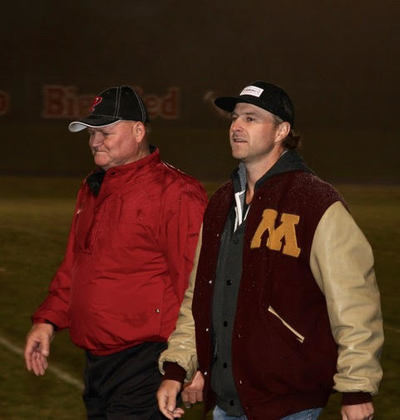

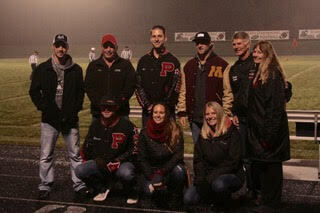





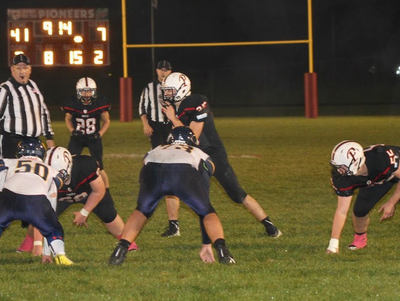
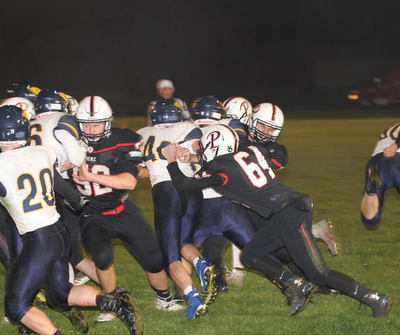
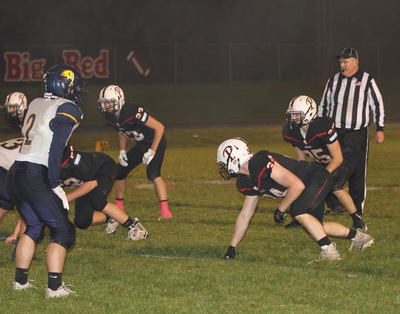
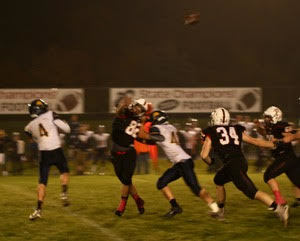

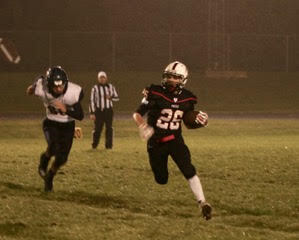



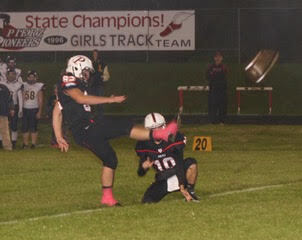


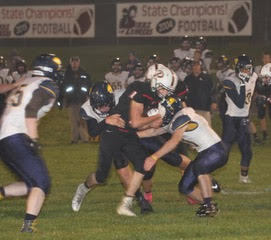


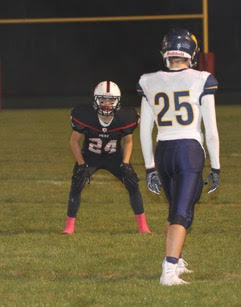


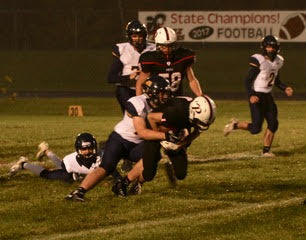

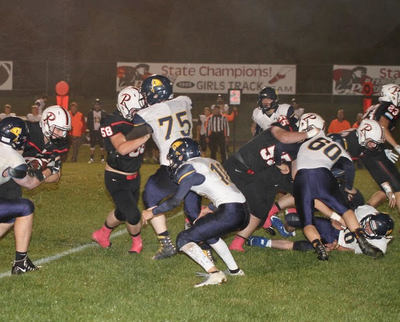



















 Upcoming Events! October 4, 2018 Frank will be at the Hello Beautiful event, with the Shoppes of Little Falls, at the Falls Ballroom from 4:00 pm to 8:30 pm, signing books and answering questions about The I-94 Murders.
Upcoming Events! October 4, 2018 Frank will be at the Hello Beautiful event, with the Shoppes of Little Falls, at the Falls Ballroom from 4:00 pm to 8:30 pm, signing books and answering questions about The I-94 Murders. Address: Falls Ballroom 15879 Hwy 27., Little Falls, MNOctober 6, 2018 Speaking on The I-94 Murders. Grey Eagle Library . Grey Eagle, Minnesota. 11:00 amOctober 13, 2018 Frank will be signing and selling books at the 19th Annual Twin Cities Book Festival, Saturday October 13, 2018, at the Minnesota State Fairgrounds, from 10:00 a.m. to 5:00 p.m. FREE ADMISSIONOctober 16, 2018 The I-94 Murders book launch will occur at the Crossings Arts Alliance in Brainerd, with Frank Weber signing and selling books from 5:00 p.m. to 7:00 p.m., with a 5:30 p.m. presentation. The Crossing Arts Alliance is located at 711 Laurel St., Brainerd, MN 56401
October 17, 2018 Frank will be speaking to readers of The I-94 Murders at 3:30 p.m. at Pierz High School in the media center. Bloodsworth: A man unfairly convicted and sentenced to death is saved by DNA.
The I-94 Murders examines a new method of using DNA to solve crimes. The initial way DNA was used in criminal cases is perhaps best explained in a book written by Tim Junkin, titled Bloodsworth.
Kirk Bloodsworth, as an adolescent was already an expert trapper and oysterman. After high school he became a Marine (honorably discharged), and then had become a waterman (crabber & fisherman) on the Eastern Shore of Maryland. Kirk had no legal charges. He was the first person to be sentenced to death and then subsequently exonerated as a result of DNA.
 Dawn Hamilton Dawn Hamilton’s mother gave birth to her when she was 17. Dawn’s mother was a stripper, but a friendly older woman, named Casimara “Mercy” Sponaugle, spent a lot of time with Dawn. Mercy attempted to adopt Dawn, but her biological father didn’t let the adoption go through. Mercy had signed Dawn up for a camp, but the father had picked her up for a visit and was unaware of the camp. Mercy was the first person to look for Dawn when she couldn’t be accounted for. When Mercy couldn’t find Dawn, Dawn’s father took over. It was a 90 degree summer afternoon in Baltimore, and Dawn was looking for friends to play with. She had been told two children she knew were by the woods. An adult man offered to help her find them. Dawn was last seen alive walking with the man into the woods.
Dawn Hamilton Dawn Hamilton’s mother gave birth to her when she was 17. Dawn’s mother was a stripper, but a friendly older woman, named Casimara “Mercy” Sponaugle, spent a lot of time with Dawn. Mercy attempted to adopt Dawn, but her biological father didn’t let the adoption go through. Mercy had signed Dawn up for a camp, but the father had picked her up for a visit and was unaware of the camp. Mercy was the first person to look for Dawn when she couldn’t be accounted for. When Mercy couldn’t find Dawn, Dawn’s father took over. It was a 90 degree summer afternoon in Baltimore, and Dawn was looking for friends to play with. She had been told two children she knew were by the woods. An adult man offered to help her find them. Dawn was last seen alive walking with the man into the woods.
In 1984, a 9-year-old, Dawn Hamilton was found dead in a wooded area, near Rosedale, Maryland, having been sexually assaulted (anally and vaginally), choked by the assailant standing on her neck with his tennis shoe, and beaten with a rock.
How does a Kirk Bloodsworth get convicted of murder and sentenced to death, when he never actually met the victim? Five eyewitnesses stated that they had seen Kirk with the victim, while he continued to maintain his innocence throughout his trial and subsequent incarceration. The two witnesses relied on most heavy by the prosecution, were a 10-year-old boy and a 7-year-old boy. Both said they saw a man with curly blonde hair with the girl. Kirk had red hair and “lamb chop” side burns. Neither boy remembered the side burns. The 10-year-old described the man as 6’5”. The investigator asked a 6’3” police officer to step into the room. The 10-year-old said the man was smaller. Later in the courtroom, the boy pointed to Kirk as the man. (It is significant to note that this was after Kirk’s arrest and picture had been all over television.) The 7-year-old said the man was 6’0” tall, and failed to pick Kirk out of a line-up; however, his mother was allowed to testify that he later told her the correct man. (She was paid for her testimony.) An adult woman, their best witness, also reported seeing a man with curly blonde hair walking away from the woods. She said the man was 5’7”. She was unhappy with the sketch the 10-year-old created, but the police decided to go with it anyway. Kirk Bloodsworth is 6’5” with red hair. The actual killer, Kimberly Ruffner (male), was 5’6” and had curly blonde hair. A fourth woman initially reported she knew the man and gave the name of another male who lived in the neighborhood. However, she later indicated she had seen Kirk. A fifth witness initially stated she didn’t see the man, but heard him calling the girl. She later testified she saw Kirk. (Both of these women said at the second trial they had gone with the image of Kirk shown on TV. Kirk was convicted again at the second trial.)
 Kirk Bloodsworth This was a heavily publicized case and pressure was put on the police to solve it. Police were combing the area, and an officer came upon Kirk Bloodsworth sitting in a yard drinking a beer. Kirk had quit his job in Baltimore and left his wife as a result of her substance abuse and her failing to come home at night. Kirk had told a friend, he had “done something bad.” Kirk indicated he was nervous because he had marijuana he hid in his shoe when he saw the officer coming. Kirk had never been arrested for anything. The officer went back and told investigators that Bloodsworth seemed unnaturally nervous, so they decided to pull him in for questioning. The investigators set girl’s underwear, shorts and a rock on a table in the room to see if Kirk would have a reaction to them. (They had heard the killers will react to material from the murder being placed in the interview room.) Kirk didn’t react to them.
Kirk Bloodsworth This was a heavily publicized case and pressure was put on the police to solve it. Police were combing the area, and an officer came upon Kirk Bloodsworth sitting in a yard drinking a beer. Kirk had quit his job in Baltimore and left his wife as a result of her substance abuse and her failing to come home at night. Kirk had told a friend, he had “done something bad.” Kirk indicated he was nervous because he had marijuana he hid in his shoe when he saw the officer coming. Kirk had never been arrested for anything. The officer went back and told investigators that Bloodsworth seemed unnaturally nervous, so they decided to pull him in for questioning. The investigators set girl’s underwear, shorts and a rock on a table in the room to see if Kirk would have a reaction to them. (They had heard the killers will react to material from the murder being placed in the interview room.) Kirk didn’t react to them.Kirk was ultimately released and proceeded to drink excessively, frustrated that he was being accused of murdering a child, when he would never hurt a child. A woman who was a friend with one of the investigators was asked to listen to him, to see what he said. Kirk commented, “They think I killed that girl with a rock.” That statement resulted in Kirk being incarcerated for the next nine years. Investigators argued that only the murderer could have known the girl was killed with a rock. Kirk said he just assumed this, being the rock was sitting with her clothes.
A man’s tennis shoe was found in the home Kirk was visiting, with a similar shoe print to the one on the girl’s neck. An investigator reported the tennis shoe was size 10 ½. Kirk wore size 10 ½. However, the investigator later revealed the tennis shoe was 10 ½ inches long and wasn’t a size 10 ½ . The shoe was actually a size 8. Still, jurors who convicted Kirk stated it was too coincidental that a similar shoe was in the home. (It was never determined that this was the shoe. It was a popular brand.)
And then investigators found out Kirk had said that he had, “done something bad.” While this statement was used, the woman he said it to was never allowed to explain in court that she knew it was in reference to leaving his wife and quitting his job. When Kirk was asked about it, he was nervous and said he was supposed to buy his wife a taco salad. This poor explanation was used in each court hearing. The prosecutor showed the brutal pictures of the girl’s murder to the jury, generating an attitude that someone needed to pay for this.
Kirk’s defense attorney wanted to have the body fluid evidence on the girl’s clothing examined. The medical examiner reported there was sperm present. Even though this was before DNA testing, they could still use it to identify the killer’s blood type. However, when the evidence was turned over to the FBI, they reported there was no sperm on the clothing. Eight years later, not only did a private lab find sperm on the clothing, they pointed out that the FBI lab had taken a marker and drawn an arrow to it. However, the FBI apparently never tested it. Kirk and his attorneys didn’t know this at the time of his trials, and were subsequently told they had no evidence to prove Kirk wasn’t the killer. But think about how backwards this case had become. There was no physical evidence connecting Kirk Bloodsworth to the crime, and despite that, he was sentenced to death row, simply because he couldn’t prove he wasn’t he killer.
Ironically, Kirk had an alibi. He had been with three friends, who were all addicts. All reported they remembered the day because the cat had urinated on Kirk’s blanket when he was sleeping on the couch. Each witness was determined not credible by the prosecutor, Ann Brost. She asked them to identify where they were at on random other days in court, and they weren’t able to say. Keep in mind when a friend is accused of murder, you are more likely to remember that day.
Kirk had a tough time in prison as a man believed to have raped and murdered a child. At night, prisoners would routinely walk by and toss cups of urine into his cell. He was 22-years-old at the time he was wrongfully convicted, and he served nine hard years in the Metropolitan Transition Center (MTC), formerly the Maryland Penitentiary, in Baltimore City. It opened in 1811, and is the oldest operating correctional institution in the western world. Cockroaches rained down from the ceiling at night.
Sadly, a retrial was able to raise serious questions about the eyewitness testimony, but it still resulted in a second conviction. The retrial exemplified the “gaminess” of court. The judge received a call from a mental health facility indicating a sex offender had come to their facility on the day Dawn was murdered with scratches all over his body, meeting the description released by the police. The prosecution had been aware of this for two years before the retrial and hadn’t told the defense until the beginning of the second trial. Kirk’s attorney had gone to the facility, but the people he needed to talk to were on vacation. The defense attorney thought he could win the retrial without this information. The judge admonished the prosecution because court should be a search for the truth rather than a game people win. The judge admonished the defense for not asking for a postponement to examine the evidence. He believed the defense had saved the information to use for a mistrial, and he wasn’t going to let the court be manipulated. Kirk was the one who paid the price for this. The judge convicted Kirk again, and he was out of appeals. DNA n 1992, while in prison, Kirk Bloodsworth read an account of how DNA testing had led to the conviction, in England, of Colin Pitchfork in the killings of Dawn Ashworth and Lynda Mann. This resulted in the use of DNA to gain the exoneration of an earlier suspect in the case, who had falsely confessed to murder. In England, they DNA tested 3,000 men in the community over a period of years before they found the match. After being confronted with the evidence, Pitchfork admitted killing both girls. Hoping to prove his innocence, Bloodsworth pushed to have the biological evidence against him tested by this new forensic technique.
Bloodsworth spoke to attorney, Robert E. Morin, and Maryland public defender, Stephen E. Harris, and asked them for help. He had no money to pay them and no appeals left. Bob Morin took on the case and paid for DNA testing out of his pocket, simply because he became an attorney to help innocent people, and every attorney who worked with Kirk believed he was innocent.
Initially, the available evidence in the case — traces of semen in the victim's underwear — was thought to have been destroyed; however, it was eventually located in a paper bag in the judge's chambers. The prosecutors were so convinced of Bloodsworth’s guilt; they agreed to allow testing of the past evidence only if they were allowed to hold a public announcement of the findings. DNA testing was in its infancy, and it couldn’t prove innocence with certainty at the time. It could narrow the results down to 10% of the population. Kirk’s attorney advised him that he could still be innocent, but if he was in that 10% he would look guilty and the sample would be destroyed. Kirk told them to run the test, he couldn’t take anymore prison.
The lab had the sample for eight months before the results were returned. Kirk recalled having fallen asleep in the prison library that day and had dreamt of being free on a lake, with his mom waving to him from shore. His mother had died during Kirk’s incarceration of what he attributed to a broken heart. Kirk had converted to the Catholic faith in prison and felt that his mother now knew the truth and may be guiding him. When he woke up he had a note to call his attorney. The test results were in.
The testing proved that the semen did not match Bloodsworth's DNA profile. Sandra A. O’Connor was the County Attorney, although her assistant Ann Brost, handled the case. They said they needed to run their own tests before Kirk could be released. This time FBI testing indicated the lab was correct. Bloodsworth was not the killer. In 1993, Bloodsworth was released after more than nine years in prison.
Though released from prison, Bloodsworth was not formally exonerated. Sandra A. O’Connor, formerly dismissed the charges stating there was “insufficient evidence” to mount a new trial. She would not say he was innocent and offered no apologies. The public didn’t understand DNA at the time and assumed Kirk was released on a technicality. So even though Kirk was free, he was still treated as if he was guilty. The prosecutor now had the DNA of the killer, but didn’t enter it into CODIS (even though it was now up and running), the national DNA system, for another decade. Kirk asked them to, as he wanted it to prove his innocence once and for all. Prosecutor Ann Probst argued that they didn’t have the funding.
In 2003, nearly a decade after Bloodsworth's release, prisoner DNA evidence added to state and federal databases resulted in a match to the real killer, Kimberly Shay Ruffner. A month after the 1984 murder, Ruffner had been sentenced to 45 years for an unrelated burglary, attempted rape and assault with intent to murder an adult woman. He had been incarcerated in a cell one floor below Bloodsworth's own cell. During one interaction, Ruffner told Kirk he knew exactly where the murder of that girl was committed. Kirk never considered at the time that Ruffner was the one who had killed her. In a 2009 guest lecture at Florida Atlantic University, Bloodsworth said that he and Ruffner sometimes spotted each other during workouts.
In light of the new DNA evidence, Ruffner was charged in Maryland for the rape and murder of the girl; in 2004, he pleaded guilty to the 1984 murder and was sentenced to life imprisonment. Ruffner had been charged twice previously, but not convicted, of abusing children. He had been found not guilty of raping a child and was released from jail less than one month before raping and murdering Dawn. Ruffner admitted he had used the drug PCP the night before the murder. He had beaten the girl with a rock and stepped on her neck after anally raping her and sticking a branch into her vagina. Ruffner’s conviction resulted in the full exoneration of Bloodsworth in 2004. It is significant to note that Bloodsworth’s life was saved in prison during an attack by a Black Muslim prisoner who didn’t know Kirk. When Kirk asked him why he helped a man he didn’t know, the man simply told Kirk it was the right thing to do. Life After Exoneration “If it could happen to me, it could happen to anybody,” Bloodsworth has said many times. Shortly after his exoneration, Bloodsworth began avidly fighting for others who had been wrongly convicted. Bloodsworth helped gain support for the Innocence Protection Act (IPA) of 2003. Among other federal funding initiatives, the IPA established the "Kirk Bloodsworth Post-Conviction DNA Testing Program," intended to help states defray the costs of post-conviction DNA testing. Over 100 death row inmates have been exonerated as a result of DNA testing. Bloodsworth helped gain repeal of the death penalty statute in Maryland.
He published Bloodsworth, a book about his wrongful conviction experience, in 2004. A couple of years ago, he began working as the Advocacy Director for Witness to Innocence, a Philadelphia-based coalition of death row exonerees who work to end capital punishment.
As an aside, biochemist Kary Mullis, was instrumental to resolving this case. He created a process called Polymerase Chain Reaction, which was a technique that allowed DNA to reproduce in a test tube. This enabled investigators to use DNA samples in cases where they didn’t previously have enough DNA to get a useable sample. Mullis won a Nobel Prize for this in 1993.
Prosecutor Anne Brost met with Kirk personally after the correct killer had been identified. Kirk told her he had hated her for 20 years, for calling him a rapist and a child killer, but he doesn’t hate her anymore because she was willing to meet with him personally and tell him the truth. Kirk bought a boat he called “Freedom” and returned to life as a “waterman.”
This song is for all of you fans of “Better Call Saul.” This song was written and recorded by a married couple C. Carson Parks and Gaile Foote. They created the version everyone imitates. They knew to make money they would have to have someone famous perform it, so they gave it to Frank Sinatra and he did it with his daughter Nancy, and made it a #1 hit.
Thanks for listening,
Frank
Pierz Homecoming week. Pierz football has only lost 1 game in the past 3 ½ years, which is pretty impressive when you consider they are one of the smallest schools in their class.



















































Published on October 07, 2018 09:40
No comments have been added yet.



